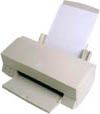The Subject
Recognize the subject of a sentence when you find one.
Every verb in a sentence must have a subject. If the verb expresses action—like sneeze, jump, bark, or study—the subject is who or what is doing the action.
Read this example:
During his biology lab, Tommy danced on the table.
Danced is an action verb. Tommy is who performed that action.
Now read this next example:
The speeding hotrod crashed into a telephone pole.
Crashed is the action verb. The hotrod is what did the crashing.
Not all verbs are action verbs. Some verbs are linking: am, is, are, was, were, seem, become, etc. A linking verb will connect the subject to additional information about it.
Consider this example:
Ron's bathroom is a disaster.
Bathroom is the subject. Is connects that subject to additional information. The noun disaster lets us know that some cleaning is in order!
Here is another example:
The bathroom tiles are fuzzy with mold.
Tiles is the subject. Are connects this subject to more information. The phrase fuzzy with mold tells us a good scrubbing is necessary!
Generally, but not always, the subject of a linking verb will come before the linking verb.
Know the difference between a complete subject and a simple subject.
The complete subject includes all the modifiers (descriptive words) that go with it.
Read the sentence below:
The big, green, hungry Martian grabbed a student from the back row.
Who did the grabbing? The Martian, of course. But this Martian wasn't petite, blue, and satisfied. No, this one was big, green, and hungry. The complete subject is thus the big, green, hungry Martian.
The simple subject, on the other hand, includes no description.
Read this example:
The bright copper coin sparkled on the sidewalk.
What did the sparkling? Obviously, the bright copper coin. The, bright, and copper, however, are just description that distinguishes this coin from one that is, let's say, tarnished and silver. The simple subject is only the noun coin.
Do not mistake a word in a prepositional phrase for the subject.
The subject of a verb will never be part of a prepositional phrase.
A prepositional phrase begins with a preposition (words like in, on, at, between, among, etc.) and ends with a noun, pronoun, or gerund.
Here are examples of prepositional phrases:
in the dirty bathtub
on the bumpy road
at home
between us
among the empty pizza boxes
without crying
Sometimes a prepositional phrase appears to be either the subject itself or part of the subject.
Read the example that follows:
Neither of these boys wants to try a piece of pineapple pizza.
In this sentence, the noun boys seems to be the subject, but boys is part of a prepositional phrase, of these boys. Neither is the actual subject.
Here is another example:
My dog, along with her seven puppies, has chewed all the stuffing out of the sofa cushions.
Both my dog and her seven puppies are chewing on the sofa, but because the puppies are part of the prepositional phrase along with her seven puppies, the only word that counts as the subject is dog.
Sometimes the subject comes after the verb.
Generally, the subject comes before the verb, as in all the examples above. There are, however, exceptions:
In a small house adjacent to our backyard lives a family with ten noisy children.
Lives is the action verb in this sentence, but it is not the house or the backyard that is doing the living. Instead, it is the family with ten noisy children. Family, then, is the subject of this sentence, even though it comes after the verb.
Here is another example:
Around the peach tree are several buzzing bumblebees.
Are is the linking verb in this sentence. The noun tree is not the subject because it is in the prepositional phrase around the peach tree. The subject in this sentence, bumblebees, follows the verb rather than coming before it.
©1997 - 2025 by Robin
L. Simmons
All Rights Reserved.
